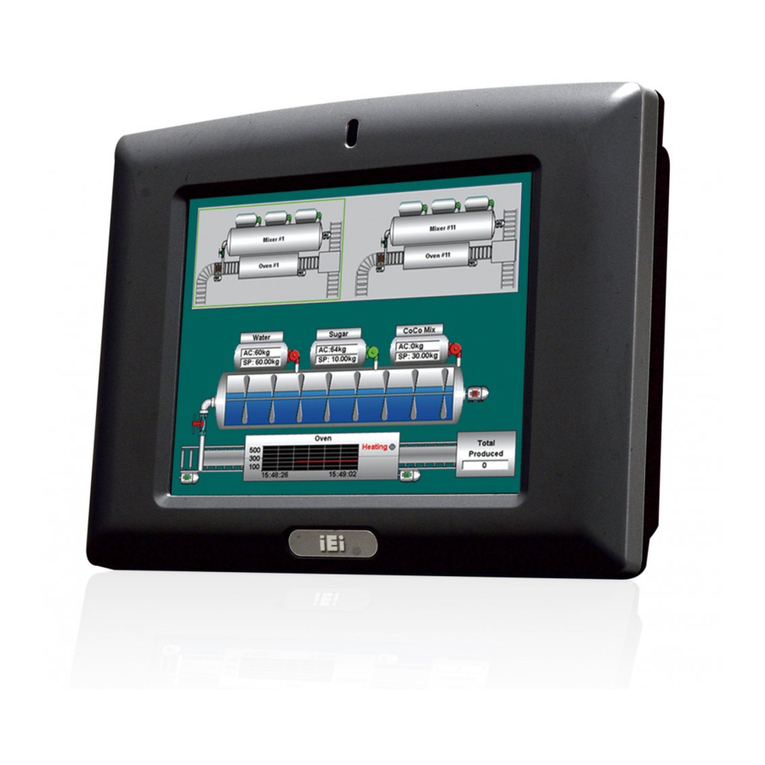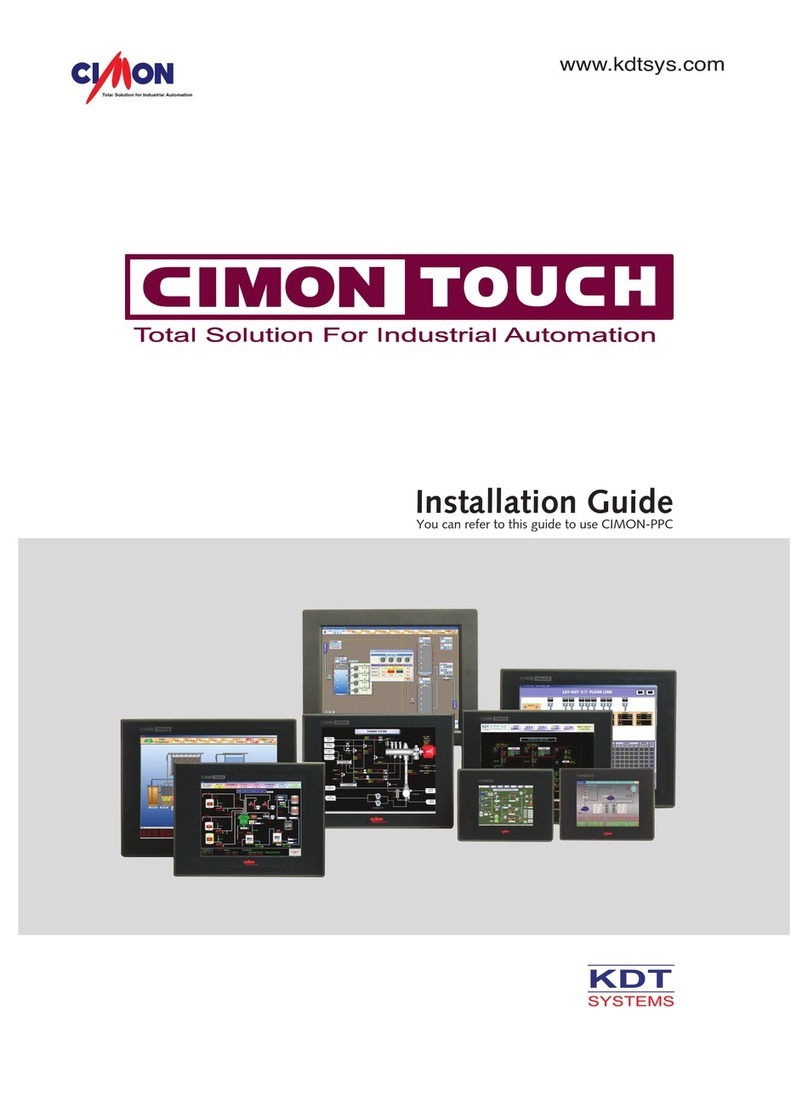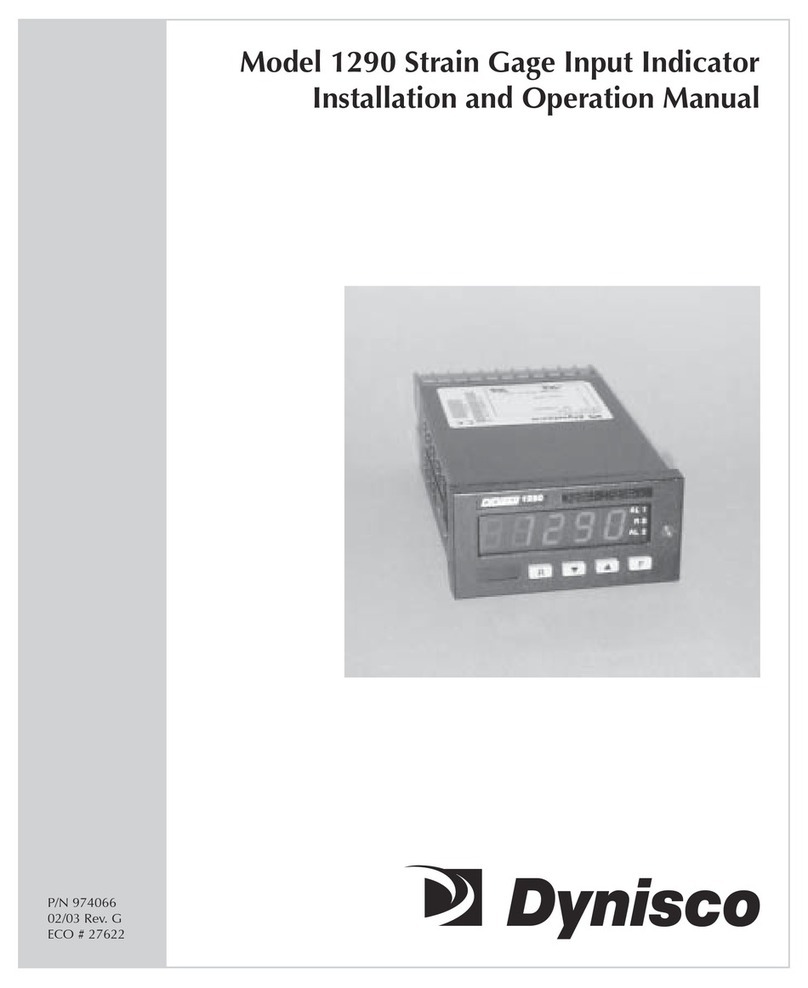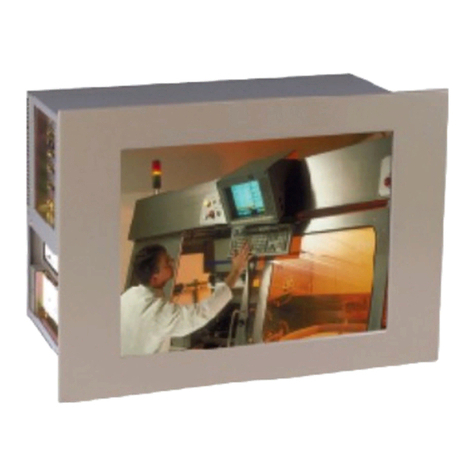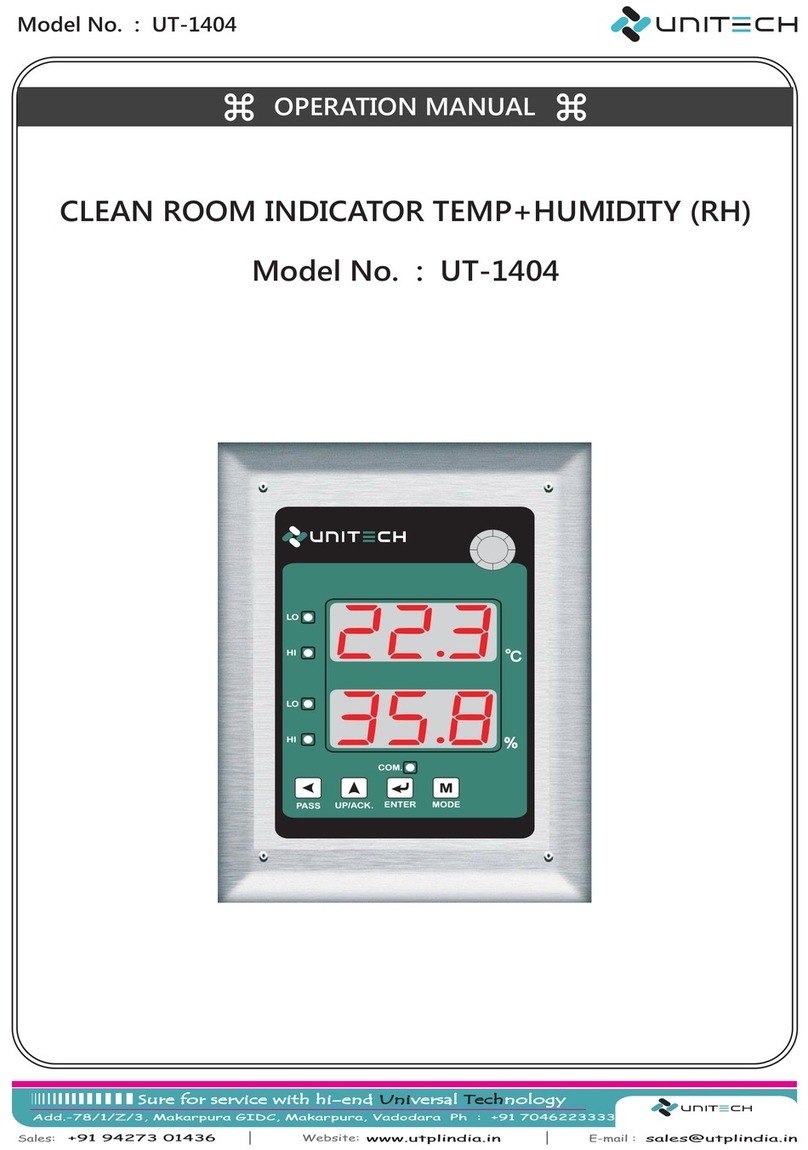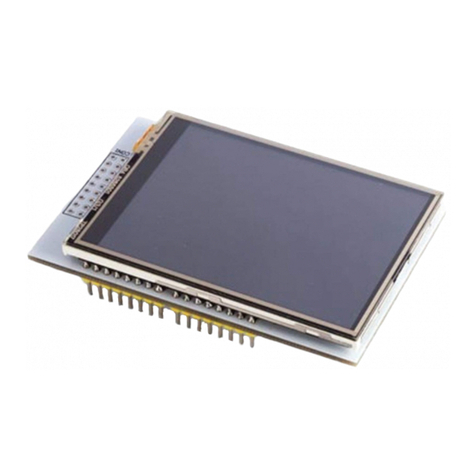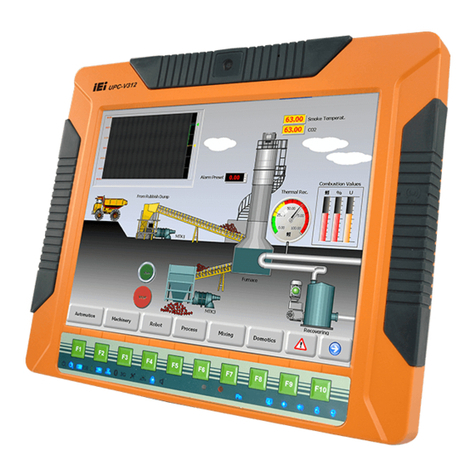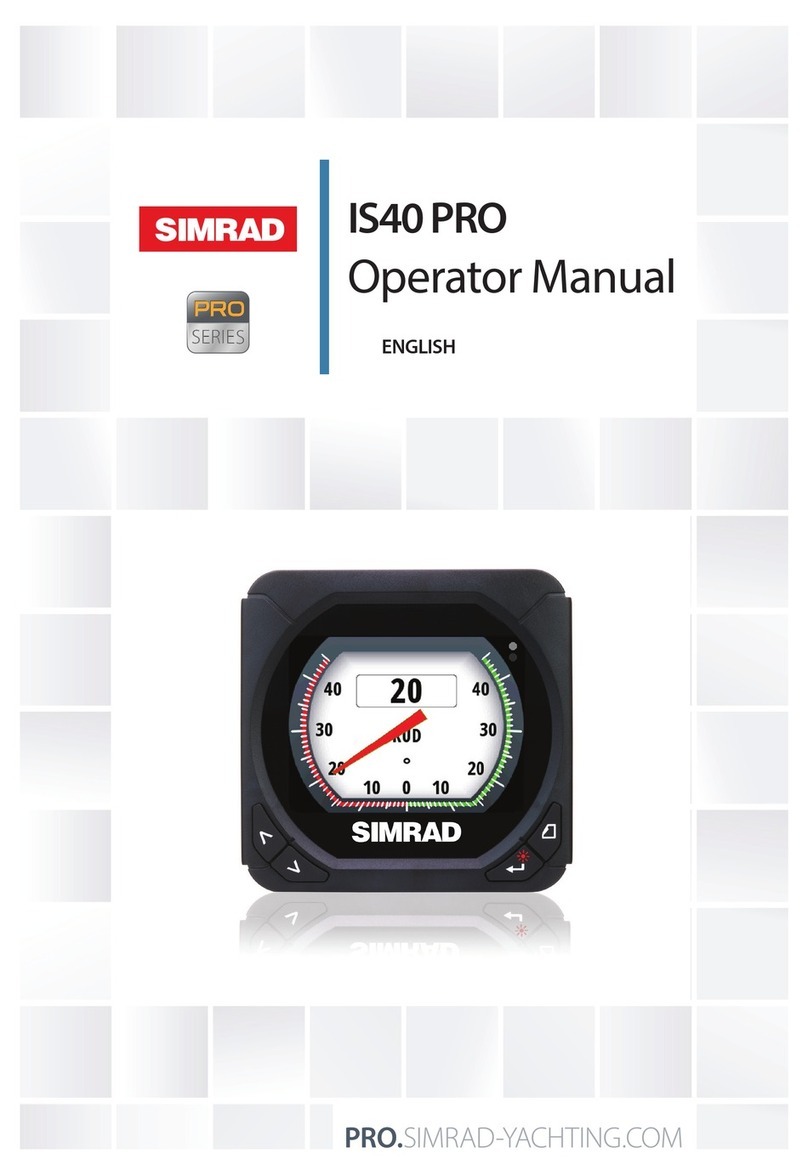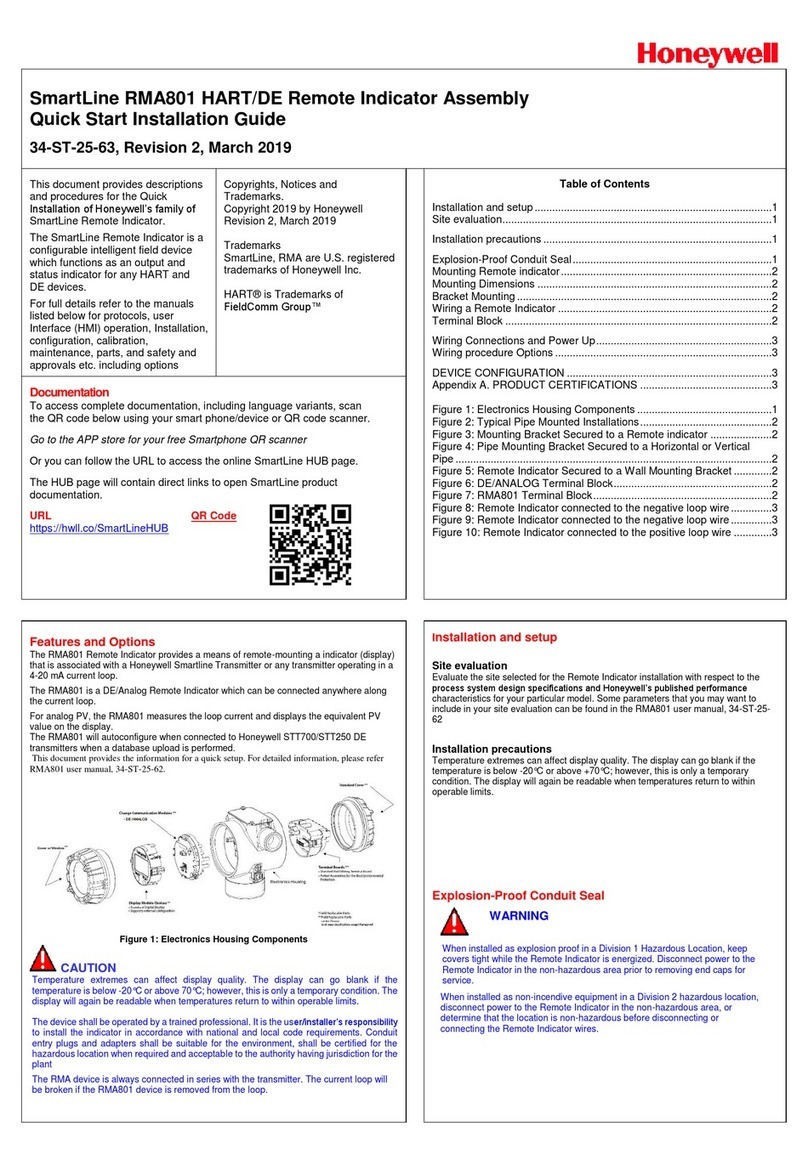Jerguson MAGNICATOR Guide

Installation, Operation, & Maintenance Instructions
IOM M500.01 March 2017
MAGNICATOR®
Installation, Operation, & Maintenance Instructions
IOM M500.01
March 2017
MAGNICATOR®
16633 Foltz Parkway ● Strongsville, OH 44149 USA Telephone: (440) 572-1500 ● Fax: (440) 238-8828
www.jerguson.com ● sales@clark-reliance.com
The Jerguson Magnicator is designed to safely determine the level of liquids and liquid interfaces.
The operation of the Magnicator is both simple and unique. The patented magnetic circuit provides
the best combination for floats and indicators available. The magnets in the float actuate the indicator
flags as the level rises or falls. The indicator tracks the float exactly, which in turn provides an
accurate level measurement.

Installation, Operation, & Maintenance Instructions
IOM M500.01 March 2017
MAGNICATOR®
2
PRECAUTIONS:
To obtain performance from your Magnetic Level Indicator (MLI), the following precautions should be observed.
1. For Mini-Magnicator, refer to specific float instructions on page 3.
2. The float chamber and float contained in your Magnicator are designed and manufactured to meet the exact
specifications for your particular process conditions. Do not use this indicator with liquids of different
densities or under different operating process conditions for which it is rated without careful review of the
new application.
3. The Magnicator must be operated in an area free of magnetic forces or matter which will influence the
magnetic circuit. This includes items such as steel support straps, heater wires, and steel steam trace
tubing. Generally speaking, all carbon steel material should be kept at least 12 inches (305mm) away from
the MLG column. Contact the factory if this clearance cannot be obtained.
4. Do not hydrostatic test the magnetic level indicator with the float inside the chamber. The float is designed
for maximum operating pressure only. Exceeding of this pressure may affect the performance of the float.
5. On models BEF, care must be taken not to bend or deform extension rod, as this may hinder the float
movement.
6. Check tag number and serial number engraved on float, and confirm they match the information located on
the nameplate of the MLI chamber.
INSTALLATION:
To install your Magnicator, perform the steps described below.
1. Unpack and inspect each unit upon receipt. The float is removed from the Magnicator and packed in a
protective tube that is temporarily attached behind the indicator scale for shipment. The float should remain
in this protective tube until it will be installed inside the MLI chamber.
2. The MLI must be installed vertically and level.
3. Block valves should be installed between the process vessel and the MLI.
4. Composition gaskets are supplied for the access flanges. If composition gaskets are not suitable for your
process, appropriate gaskets should be used. Check tag and serial number of float to assure correct match.
Remove tag prior to operation.
5. Install float, be sure to remove the instruction tag and to clean off any foreign matter, especially metal
particles which may have become attracted to the magnet assembly inside the float. The top of the float is
marked and must be installed toward the top of the MLI.
For Model EF (End Flanged)
Float stop plates with springs are supplied and should be installed between the Magnicator and mating
flange/block valves
For Model BEF (Bottom End Flanged)
Floats are factory installed on top mount level indicators and packed to protect it from damage. Remove all the
packing material before installation.

Installation, Operation, & Maintenance Instructions
IOM M500.01 March 2017
MAGNICATOR®
3
OPERATION:
1. Putting MLI in service:
• Check that the operating conditions are within the rating of the MLI. Each Magnicator has a
permanent name plate engraved with the rating and process conditions.
• Check to see that all vent and drain valves and plugs (if applicable) are securely closed.
• Flag Indication: Black = Vapor Space, Yellow = Liquid Space (all flags should be in the black
position). Alternate color flag indication: White = Vapor Space, Red = Liquid Space (all flags
should be in the white position).
• Slowly open the upper isolation valve. Upper isolation valve must be opened first to equalize the
pressure between the chamber and tank / vessel.
• Slowly open the lower isolation valve. The float will rise with the liquid level in the chamber. The
magnet assembly is positioned in the float so it will ride at the surface of the liquid (or at the
interface between two liquids when specified). Flags will turn yellow with the liquid level.
2. Preparing MLI for maintenance:
• Close lower isolation valve.
• Close upper isolation valve.
• Slowly open vent valve to release the pressure from the MLI chamber.
• Slowly open drain valve to drain liquid from the MLI chamber.
MAINTENANCE:
The Magnicator Magnetic Level Indicator is a simple device which requires a minimum amount of maintenance.
The maintenance normally consists of cleaning the chamber. The frequency of cleaning will depend on the
process in which it is installed in. When enough foreign matter collects in the chamber to restrict the movement
of the float, it will be necessary to isolate the chamber and drain out the accumulation of dirt from the MLI. The
chamber can be flushed by using the vent and drain connections. In extreme cases, it may be necessary to
remove the float, and mechanically clean the float and chamber. Some processes may dictate the use of a
suitable solvent for cleaning. In the event the float should be removed, refer to steps given under
INSTALLATION.
Mini-Mag Float Installation Procedure
Using the following steps to install the float inside of the chamber. All other setup and maintenance procedures
should be done in accordance with the Magnicator Installation, Operation & Maintenance.
• Find the arrow on the tag that is etched onto the float. The arrow tip locates the proper pole of the magnet
inside of the float.
• Insert float into the chamber with the arrow tip, and magnet, facing towards the indicator.
Completing these steps will ensure proper coupling between the magnets in the float and the indicator during
startup and operation.
Caution: Only clean indicators with a damp cloth to avoid electrostatic charge of non-metallic components.
Certificate #CR17ATEX1001
External temperature of components and T code is based on internal process temperature. When operating with no added accessories,
the external temperature can only be equal to or less than the process temperature. Take caution when installing accessories that may
generate their own heat. Always ensure the rating of the equipment meets or exceeds the requirements of the hazardous location.
Available Certifications:
ATEX EU RUSSIAN CANADA
PED Available
Contact Factory
CRNs Available
by Province
II2 GD
Ex h IIC T6…T1 Gb
Ex h IIIC T450C…T85C Db

Installation, Operation, & Maintenance Instructions
IOM M500.01 March 2017
MAGNICATOR®
16633 Foltz Parkway ● Strongsville, OH 44149 USA Telephone: (440) 572-1500 ● Fax: (440) 238-8828
www.clark-reliance.com ● [email protected]
Table of contents
Popular Touch Panel manuals by other brands
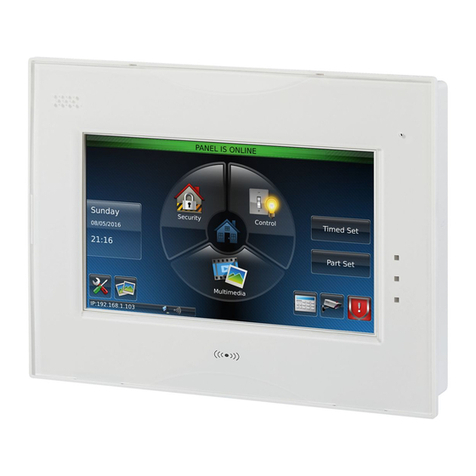
Honeywell
Honeywell Galaxy TouchCenter Plus user guide
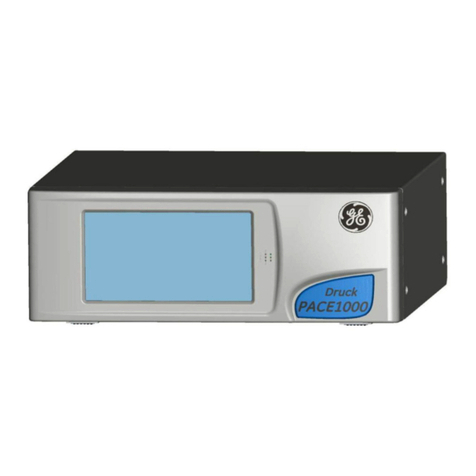
GE
GE Druck PACE1000 Safety Instructions and User Guide

Samsung
Samsung HARMAN AMX VARIA-150 quick start guide
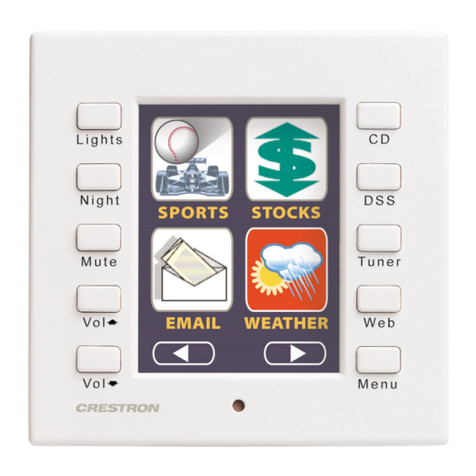
Crestron
Crestron CT-1000 Operation guide

PAT America
PAT America DS 350 Operator's manual

Legamaster
Legamaster e-Screen PTX-9800UHD Quick setup guide
